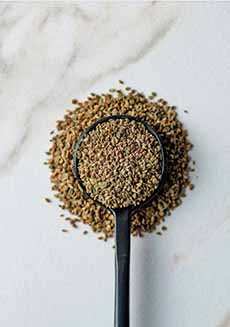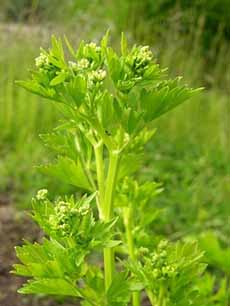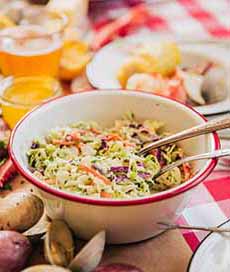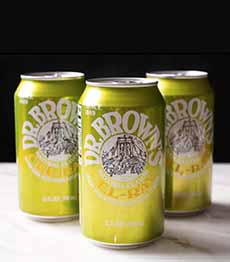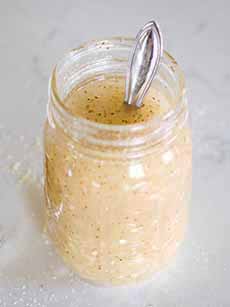Cooking Tip: What To Do With Celery Seeds
|
Do you have a package of celery seeds languishing in your pantry? Here’s what you can do with them. First… Celery seeds are tiny brown seeds (photo #1) that are harvested from the flowers of the wild celery plant (photo #2)—a different variety from the celery we eat. They are one of the smallest seed spices, and (trivia alert!) there are approximately 750,000 seeds in 1 pound, 45,000 in one ounce. Diminutive though they may be, it takes very few of these aromatic seeds to deliver a mouthful of celery stalk flavor. Yes, the seeds taste just like the stalk. (Food 101: The whole bunch or head of celery is called a stalk. It is composed of individual pieces called ribs. Celery hearts are the tender innermost ribs of the celery stalk. The darker the color, the stronger the flavor.) In addition to their use as a spice, celery seeds are rich in antioxidants, which have been shown to have anti-inflammatory and antibacterial properties. Celery seed has been used medicinally in Ayurvedic medicine since ancient times, to treat arthritis, colds, poor digestion, flu, certain diseases of the liver and spleen, and water retention. Whole celery seed lasts for years in the jar. But to test if your years-old product is still good, see the footnote† below. > The history of celery seeds is below. > March is National Celery Month. Celery seeds are commonly used to flavor pickles, coleslaw, and other salads. In Indian and Middle Eastern cuisines, they add a punch to soups, stews, and curries. They’re also common in Russian and Scandinavian foods, including cabbage dishes (we use them in our stuffed cabbage recipe). The seeds are also ground and mixed with other spices to create Cajun and Creole seasonings, celery salt, and Old Bay Seasoning, among others. Tip: In smooth foods where texture isn’t expected, such as barbecue sauce, grind the seeds before adding them. Another tip: It’s better to buy it whole than ground, as the flavor will dissipate much faster from the ground spice. Celery seeds are very strongly flavored, so just a pinch is usually enough. Add celery seed to: Wild celery, also called smallage, is believed to be native to the Mediterranean and the Middle East, where celery seeds have been used in cooking for thousands of years. Initially, celery seeds were used in homeopathic and Ayurvedic medicine. The medicinal plant in Homer’s Odyssey, written about 850 B.C.E.†, is thought to be celery seed. The visual record of mankind’s historical link with celery seeds is in ancient Egypt, where it has been found in tombs [source]. |
|
|
|
The Romans were the first to value celery seeds as a seasoning. Much later it found its way into French and Italian cuisines. The Italians domesticated wild celery and developed it into a plant with a solid stem, without the bitterness of smallage. Thus began the development of the Pascal celery variety that we find in grocery stores today [source]. It was only in the 19th century that North Americans began to use celery seed, mainly in pickling solutions [source]. The 19th century also saw the debut, in 1868, of Dr. Brown’s Cel-Ray Soda, a celery-flavored soft drink that is made from celery seeds. It was developed as a tonic that was touted as “good for calming stomachs and bowels.” It paired well with salty, fatty foods, like pastrami, and became popular in New York’s Jewish delicatessens, where it can still be found. Here’s the history of Cel-Ray, which may be poised for a renaissance. *If the seeds are odorless or their aroma is very faint, chances are that they have lost their flavor. Similarly, if the seeds taste weak or bland, they’re past their prime. †The Iliad and The Odyssey are dated by scholars to the late 8th or early 7th century B.C.E. By this time the invention of writing was becoming widespread in Greece, and it seems that the poems in these two epics were also set down then for the first time [source]. CHECK OUT WHAT’S HAPPENING ON OUR HOME PAGE, THENIBBLE.COM.
|
||
